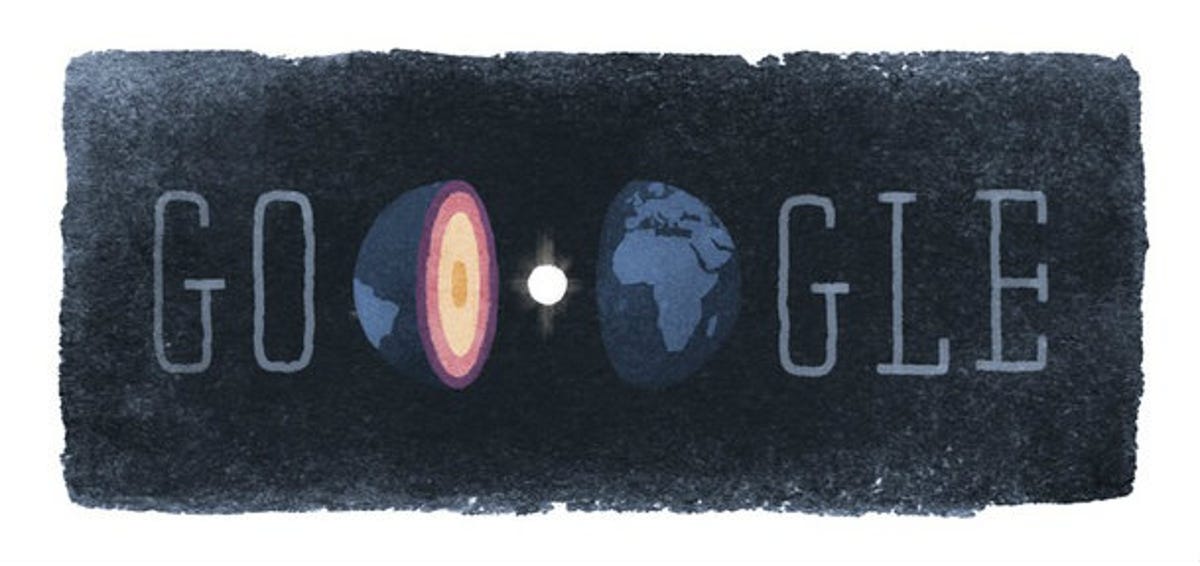
Google/Screenshot by CNET
Inge Lehmann helped us to know planet Earth a little better. And now Google is helping us to get to know Inge Lehmann.
The Google Doodle on Wednesday is paying homage to the Danish seismologist, on what would have been her 127th birthday, with an animated rendering of our planet split cleanly in two, with a small glowing orb in between the halves.
Lehmann is known for her work in contributing to our understanding of Earth’s core. After a 1929 earthquake near New Zealand, Lehmann used seismic data to conclude that the Earth’s core is solid and not entirely molten, a revelation that helped shape the future of seismology and geophysics.
Born in 1888, Lehmann grew up in Denmark and studied mathematics at the University of Copenhagen and later at the University of Cambridge. Having attended the country’s first co-ed high school, Lehmann was given then-unprecedented access to the same type of math and science education as boys of her age at a time when female representation in such fields was virtually unheard of.
(For more information related to the realities of being a woman in the fields of science and technology, check out CNET News’ “Solving for XX” package. The series explores the past, current and future landscape for women in Silicon Valley and beyond, as well as examining the gender disparity and cultural makeup of some of the world’s most powerful and pervasive companies shaping the world today.)


The Royal Library, National Library of Denmark, and University of Copenhagen University Library
With a love of mathematics, Lehmann only became a seismologist after being appointed an assistant in 1925 to mathematician Niels Erik Nørlund, then the new director of the Royal Danish Geodetic Institute. Under his study, Lehmann traveled throughout Europe and helped oversee the installation of a new network of seismometers to collect earthquake data.
She later became the chief of the institute’s seismology department, having taught herself much of the field’s core knowledge and obtaining a second graduate degree in the field to match her first in mathematics.
Her eventual discovery of the true nature of Earth’s core arose from deep study of an early 20th century problem that befuddled seismologists worldwide. In 1914, German-American seismologist Beno Gutenberg discovered that the Earth contained a semi-liquid core 1,400 miles beneath the crust by studying the different types of seismic waves — acting like x-rays displaying deeper layers of the planet — that propagated through Earth during earthquakes.
Yet the theory contained holes, which scientists at the time mostly attributed to faulty equipment, that could not explain certain types of waves arriving at certain end points of Earth that should not have been possible with only a semi-liquid core.
Lehmann, who often sat in her garden with seismometer data written on cardboard ripped from boxes of oatmeal, posited that within the Earth’s semi-liquid core was an inner core made of solid material, explaining the earthquake data. In a 1936 paper titled “P” — after the name of the type of seismic waves confounding scientists — Lehmann laid out her analysis, which fellow seismologists quickly adopted as the correct interpretation over the next few years.
Lehmann continued her work late into her 70s, pioneering new understandings about the upper mantle of the Earth. She went on to receive numerous awards, including the 1971 William Bowie Medal, the highest honor in the field of geophysics for which Lehmann was the first female recipient.
Lehmann passed away in 1993 at the age of 104 but is remembered both by the medal that bears her name given out by the American Geophysical Union and the asteroid 5632 Ingelehmann named in her honor.
CNET’s Richard Nieva and Jon Skillings contributed to this report.




